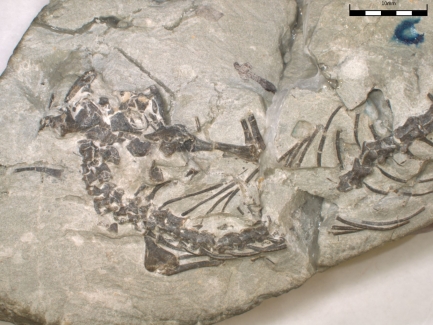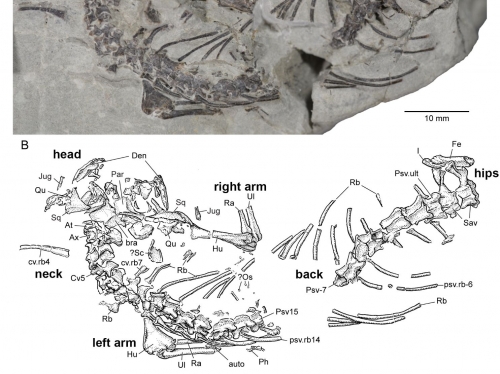Fossil skeleton of the new lizard-like reptile Opisthiamimus gregori. The fossil was discovered in the Morrison Formation of the Bighorn Basin, north-central Wyoming, and dates to the Late Jurassic Period, approximately 150 million years ago. Researchers named the new species after Smithsonian’s National Museum of Natural History volunteer Joseph Gregor who spent hundreds of hours meticulously scraping and chiseling the bones from a block of stone that first caught museum fossil preparator Pete Kroehler’s eye back in 2010. The fossil has been added to the museum’s collections where it will remain available for future study.
A team of scientists describe the new species, which once lived alongside dinosaurs like Stegosaurus and Allosaurus, in a paper published today in the Journal of Systematic Palaeontology. In life, this prehistoric reptile would have been about 16 centimeters (about 6 inches) from nose to tail—and would fit curled up in the palm of an adult human hand—and likely survived on a diet of insects and other invertebrates.
SI-267-2022




